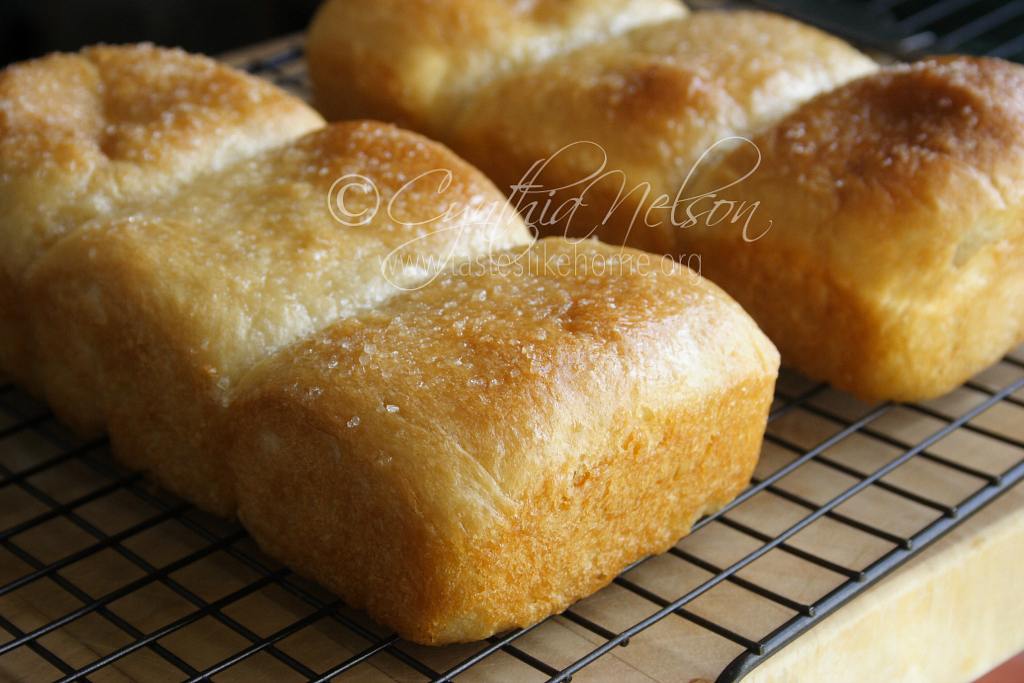 There is nothing like a hot, fresh, baked good being pulled from the oven. It is even better when served, still warm and fragrant. You imagine what the first bite will be like, how you will devour that treat in no time and perhaps get another one. Such were the thoughts and feelings a friend and I had last week Friday as we sat down with our still-warm Bajan Coconut Turnovers.
There is nothing like a hot, fresh, baked good being pulled from the oven. It is even better when served, still warm and fragrant. You imagine what the first bite will be like, how you will devour that treat in no time and perhaps get another one. Such were the thoughts and feelings a friend and I had last week Friday as we sat down with our still-warm Bajan Coconut Turnovers.
A proper Bajan Coconut Turnover is sheer love and comfort. It is a baked good made of a rich dough filled with sweetened, spiced, fresh coconut. Beautifully browned, the outside glistens from the sugar water with which it has been coated as it bakes. For extra indulgence, some people put a light sprinkling of sugar on top that is baked into the crust. On its own or with a hot or cold beverage, it goes down easily.
My friend and I, being the type of foodies that we are (the kind that examine, discuss and deconstruct food), decided to tear the Coconut Turnover rather than simply bite into it. We wanted to see the prize in the middle – the sweetened coconut. Satisfied that there was an ample filling of coconut, we bit into the pieces we had torn off. By the second chew, we looked at each other, frowning as we continued to chew and then reaching for glasses of water to swallow. The dough of the Turnovers was very salty; not just slightly salty. It was as we would say in the Caribbean, real salty. Neither of us finished our respective Turnovers, we wrapped them up to take home. And one of us—who will remained unnamed—had bought a couple extra to have with tea over the weekend. It was one of 2 things that caused the dough to be salty – either self-rising flour was used or too much baking soda. Through discreet enquiries, we learnt that it was self-rising flour.
Self-rising flour is a combination of all-purpose flour, baking powder and fine table salt. The make-up is: 1 cup all-purpose flour, 1+ ½ teaspoons baking powder and ¼ teaspoon salt. It is mostly used to make things like quick breads and Southern-style biscuits; some cookie recipes also call for self-rising flour. It is an ingredient that should only ever be used if a recipe specifies that self-rising flour be used. To do otherwise would throw off the proportion of baking powder and salt to flour in a recipe. It would also result in the baked good being under or over leavened, and it would definitely affect the taste of the baked good with the flavours being off and salty. The latter is what happened with the Coconut Turnovers my friend and I bought. The same salty results would have obtained if too much baking soda was used in the recipe; the dough would have tasted metallic.
I know that a lot of people use self-rising flour to make some everyday things like roti, bakes, bread rolls and other things that call for baking powder as the leavening agent. The reason most often heard is the uncertainty of how much baking powder to add to the flour to make the dough or batter rise or be tender. Your best bet always is to follow the instructions of the recipe you are using. However, good results are not just from a leavening agent but also from the type of mixing, how long to mix/knead and the amount of time needed for the dough to relax after being worked. Growing up I was always frustrated as to how much baking powder to add to the flour when making Paratha (oil) roti. I was constantly being told “a lil bit”, “not a full teaspoon”, “only this much” (which was represented by one of my cousin’s grabbing one of my index fingers and pressing her thumb almost to the tip of my finger). And then one day I learnt the truth, which made a lot of sense – only by “eyeing it” did the roti-makers in my family know how much baking powder to add. I know that is true for a lot of things with me too. Through many trials and errors, I figured out that the best results I get is when I add ¼ levelled measuring spoon of baking powder to each cup of all-purpose flour for my Paratha roti. Of course, as I have said, the kneading of the dough and resting time between each stage of the process along with the actual cooking is what yields the results I am after.
There is too much baking powder in self-rising flour to use it for roti and while the amount of leavening can work for bakes, there would be too much salt when cooked. However, at the end of the day, all of these things are down to personal tastes and preferences.
The next time you reach for self-rising flour, be sure the recipe calls for it. Don’t use it by default and end up with extra salty food.
Cynthia
cynthia@tasteslikehome.org






